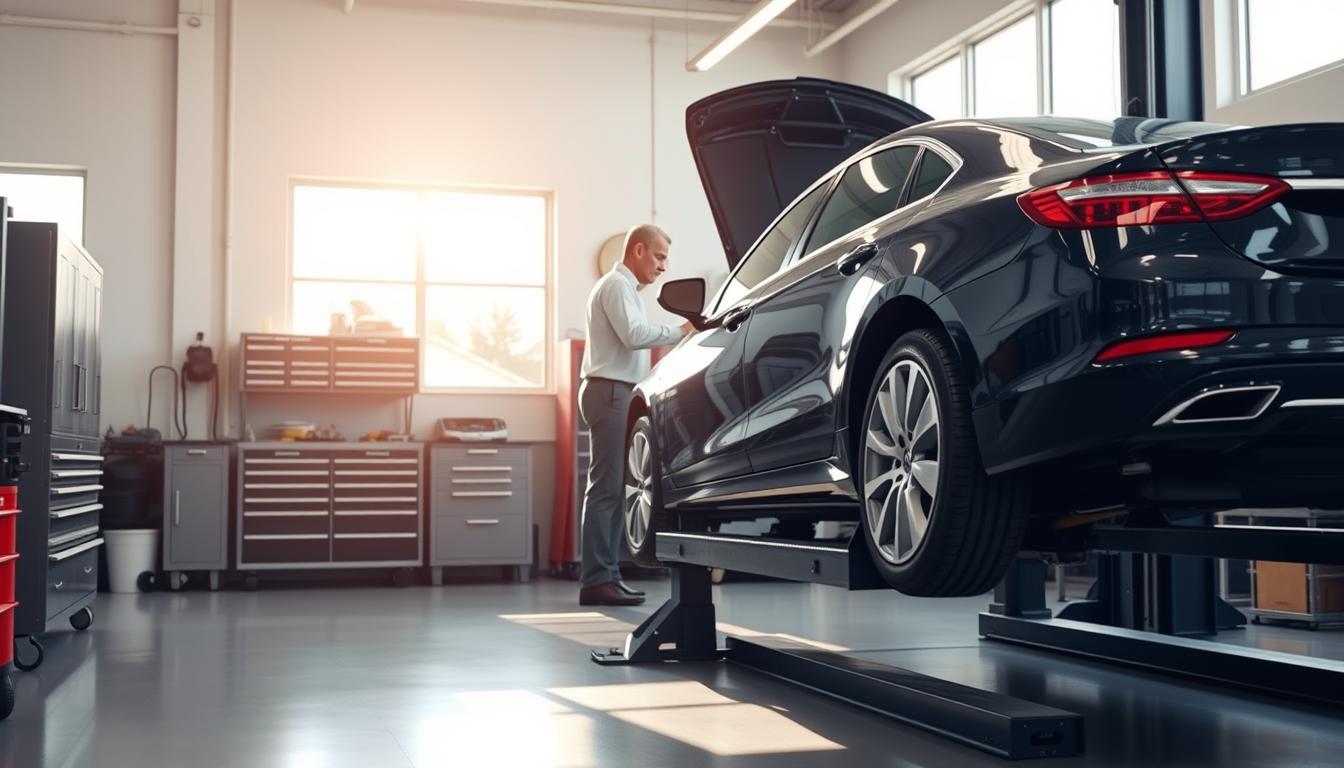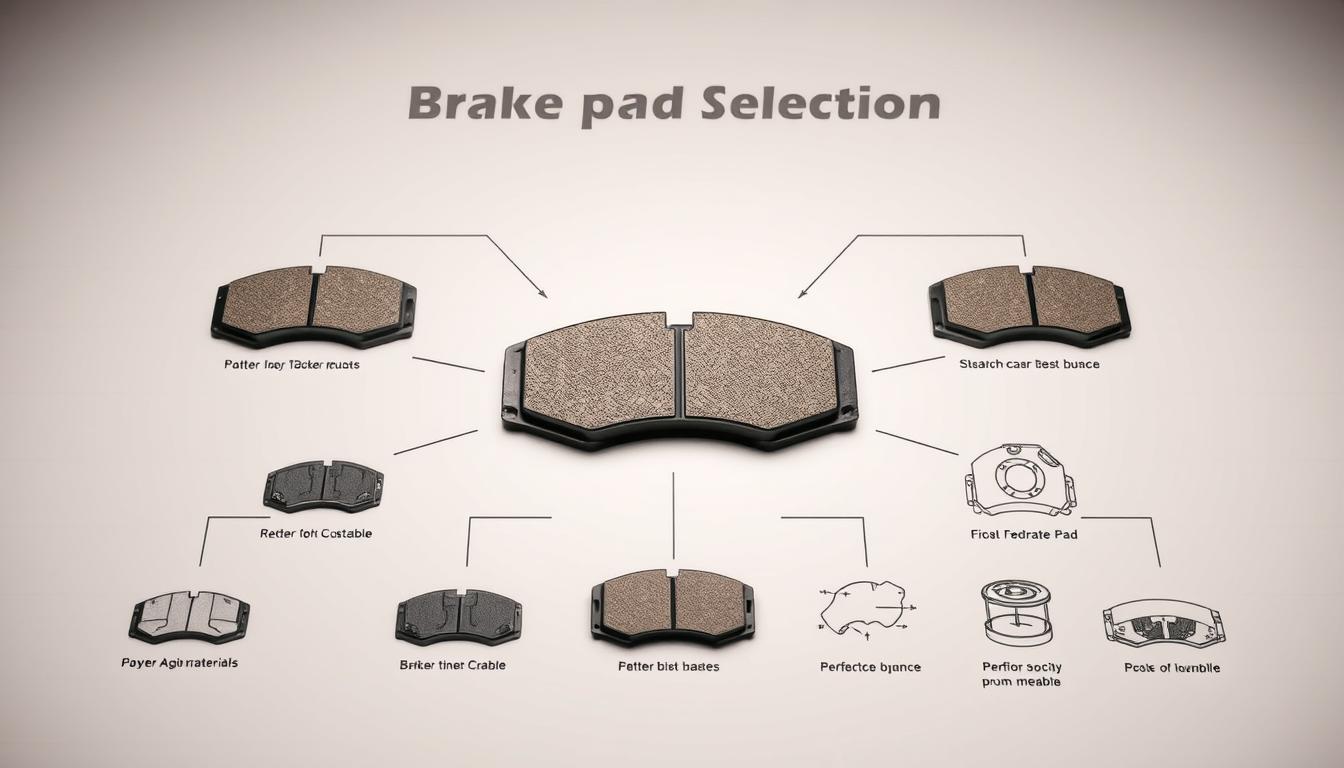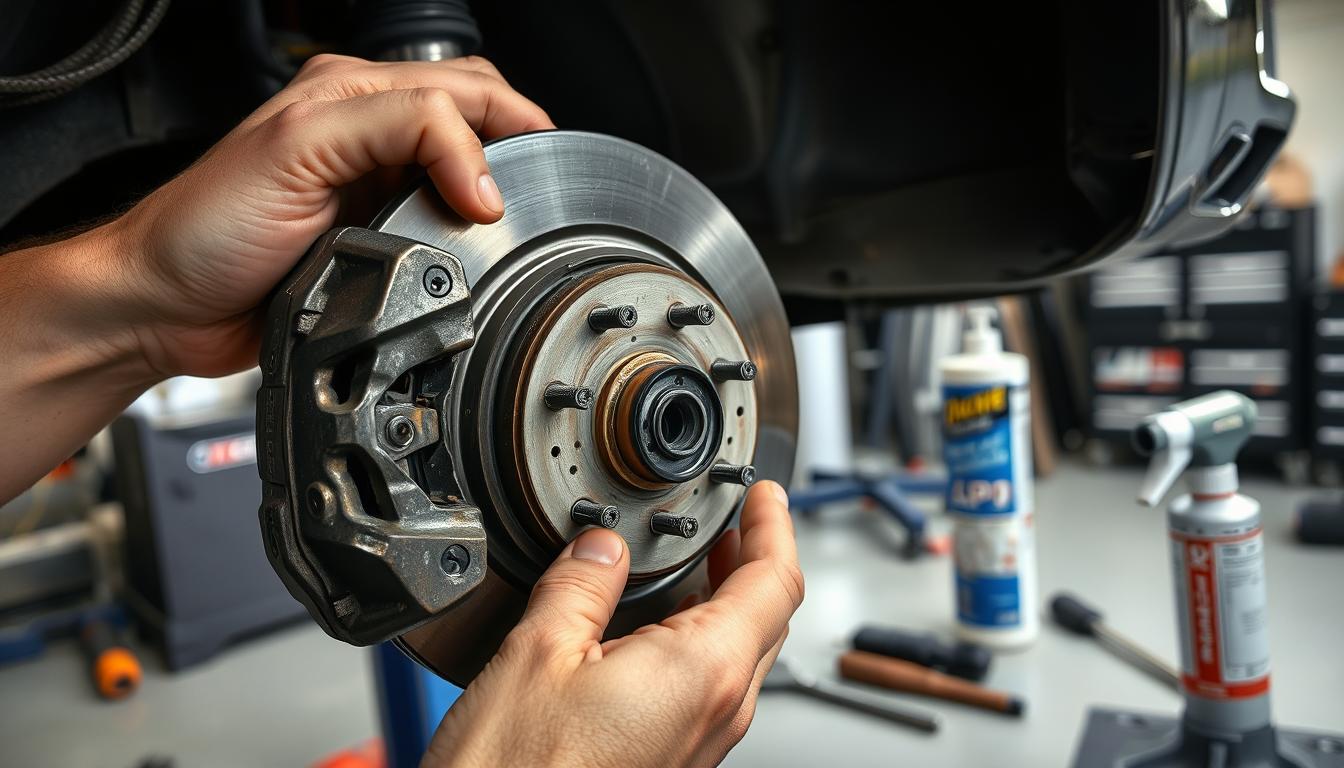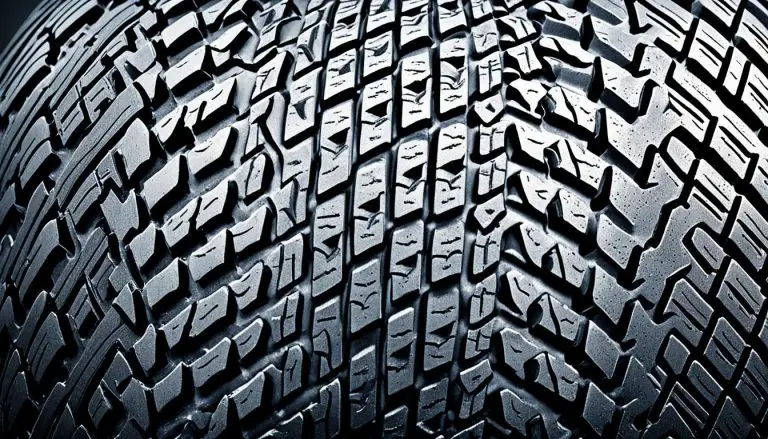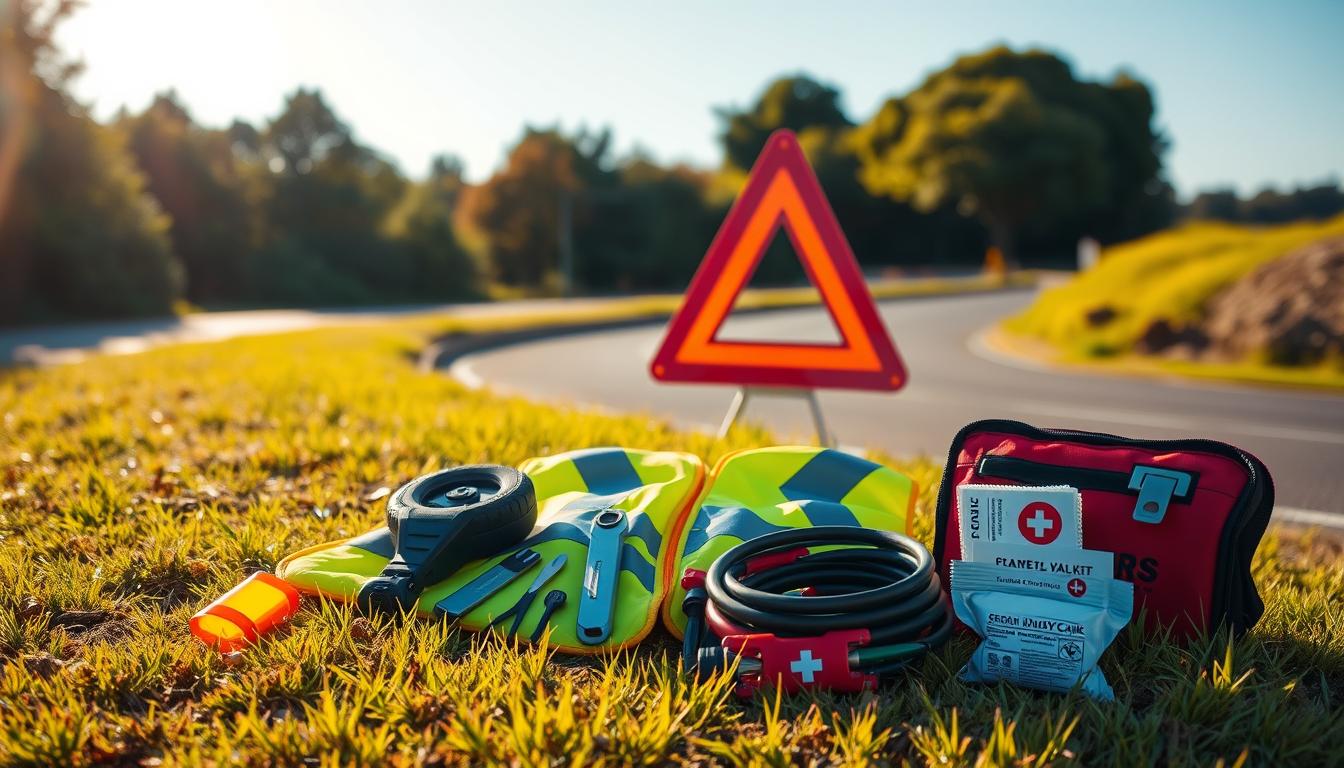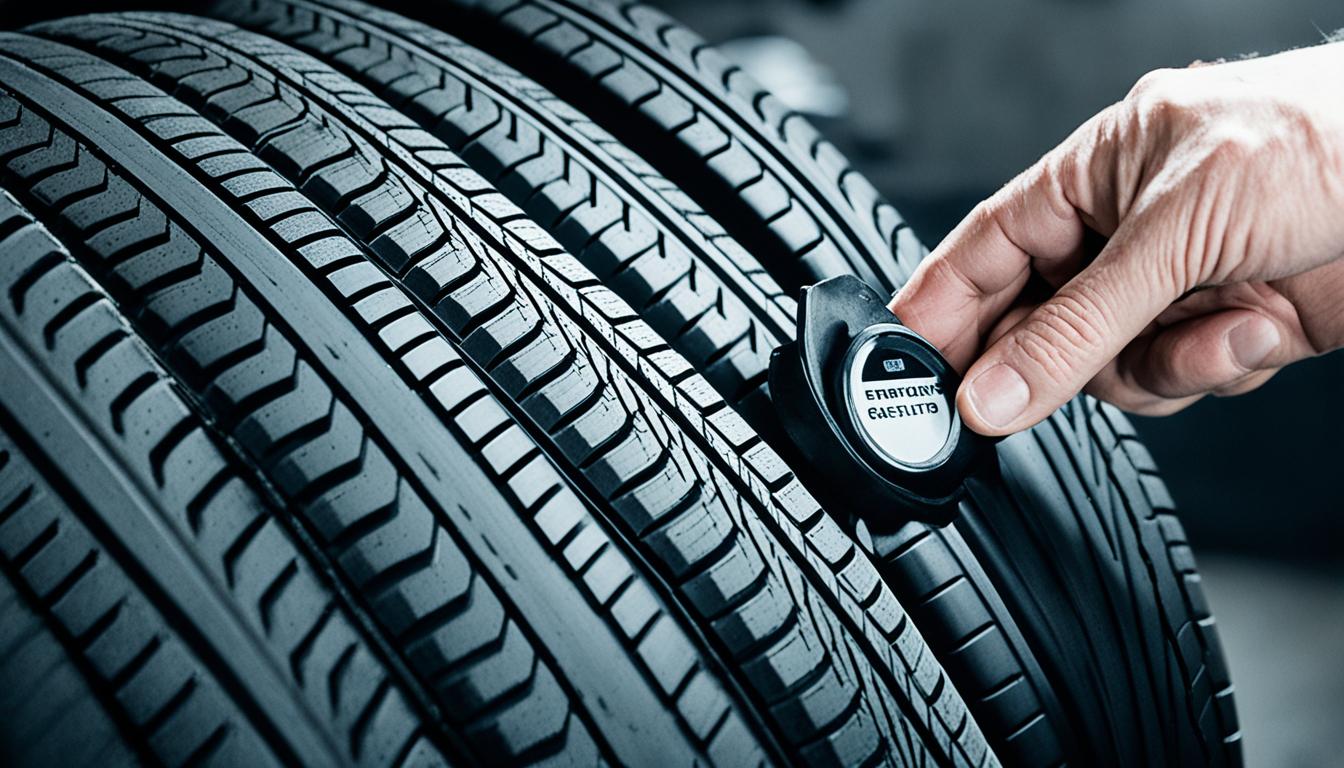
Regular tire maintenance can significantly extend your tires’ life by up to 75,000 miles. Critical for optimal performance, safety, and fuel efficiency, proper care is a must. This detailed checklist covers inspecting, rotating, and caring for your tires to enhance longevity and keep your vehicle operational.
Importance of Tire Maintenance
Proper tire care is essential for your vehicle’s safety, efficiency, and durability. Tires in peak condition ensure traction for steering, braking, and maneuvering. This results in a car that responds effectively and remains in control. They also lead to savings over time due to their extended lifespan.
Well-maintained tires enhance fuel economy by decreasing resistance. This means your car’s engine uses fuel more efficiently. Such practices not only save on fuel costs but also contribute to a greener world.
Consistent tire checks and care prevent costly repairs and maintain peak performance. Failure to do so could result in premature wear or safety hazards. These include longer stopping distances and reduced traction in adverse weather.
Frequent inspections for tire pressure and alignment, along with checking tread depth, are crucial. These steps ensure your tires are in their best shape for longer. As a result, your car operates better, and you enjoy a smoother driving experience.
| Tire Maintenance Benefit | Impact |
|---|---|
| Improved Vehicle Safety | Tires in good condition provide better traction and grip, enhancing steering, braking, and handling. |
| Longer Tire Lifespan | Well-maintained tires can last longer, saving car owners money in the long run. |
| Enhanced Fuel Efficiency | Properly inflated and aligned tires reduce rolling resistance, improving your vehicle’s fuel economy. |
| Optimized Vehicle Performance | Regular tire maintenance helps maintain your car’s handling, stability, and overall driving experience. |
Focus on tire upkeep for a safer, more efficient, and budget-friendly ride. Diligent checks and early maintenance enhance both how your car runs and its life expectancy.
Check Tire Pressure Regularly
Why It Matters
It’s key to keep the right tire pressure for a vehicle’s tire life, how well it uses fuel, and safety. Tires that have too little air wear out faster. This makes them not as good for grip and makes the vehicle harder to handle. Also, low tire pressure means the engine has to work more to move the car, which uses more fuel.
Even if a car has a Tire Pressure Monitoring System (TPMS) to warn about low tire pressure, it’s crucial to check manually at least every month. Use a high-quality tire pressure gauge to do this.
How to Check
To start, find the right tire inflation pressure, listed in your car’s manual or on the tire pressure placard on the driver’s door jamb. Check the tire pressure with a good tire pressure gauge when the tires are cold, not after driving. Add or let out air as needed to meet the PSI listed.
- Check tire pressure monthly when tires are cold.
- Use a reliable tire pressure gauge to measure the pressure in each tire.
- Refer to the vehicle’s owner’s manual or tire pressure placard for the recommended PSI.
- Adjust the air pressure as needed to match the recommended specification.
Right tire inflation is essential for tire life, safety, and saving gas. By keeping an eye on your tire pressure and adjusting when needed, your tires will work better and last longer.
Inspect Tire Tread Depth
Maintaining the right tire tread is vital for your car’s upkeep. Tires losing their depth may lead to poor traction, raising the chance of sliding on wet roads, and lower braking efficiency. This gets even worse during bad weather. Regular checks on your tire’s tread depth are crucial for your car’s safety and how well it runs.
Testing your tire’s tread is easy with the penny test. Place a penny into the tread groove with Lincoln’s head facing down. If Lincoln’s head is visible, the tire’s tread is too shallow, less than 2/32 of an inch. For the best performance and safety, change the tires when the depth is down to 4/32 of an inch.
Also, watch for the tread wear indicators. These are small bars across the tire’s tread. If the tread wears to their level, the tire is due for replacement.
- Industry guidelines suggest changing tires within ten (10) years from the manufacture date.
- Bridgestone advises considering a tire’s age alongside its condition before deciding to change it.
- To know a tire’s age, check the DOT number on the sidewall. The last four numbers show the week and year it was made.
Keeping your tire tread in good shape improves the car’s handling, braking, and safety, especially in tough weather. By staying on top of tire inspections and timely replacements, you’re truly investing in a smooth and safe journey.
tire maintenance checklist
Ensuring your vehicle’s tires are healthy and durable is crucial for safe travels. This tire maintenance checklist offers a complete guide:
- Every 6,000-8,000 miles, rotate your tires to promote even wear.
- When you rotate the tires or put on new ones, have them balanced. This step avoids vibrations and irregular wear.
- Annually, check your wheel alignment, especially if you see uneven tire wear. Proper alignment enhances handling and saves fuel.
- Change all four tires simultaneously. Make sure they match in size, speed rating, and loading capacity.
- Keep your spare tire checked and properly inflated at all times.
Following this detailed tire maintenance checklist will lengthen your tires’ lifespan, boost your vehicle’s operation, and elevate your driving pleasure. It underlines the fact that proper tire care is crucial for your safety and your vehicle’s endurance.
| Maintenance Task | Recommended Frequency |
|---|---|
| Tire Rotation | Every 6,000-8,000 miles |
| Tire Balancing | When rotating tires or installing new tires |
| Wheel Alignment | Annually or when uneven tire wear is noticed |
| Tire Replacement | All four tires at the same time |
| Spare Tire Inspection | Regular intervals |
Adhering to this complete tire maintenance checklist ensures your tires stay in prime shape. This leads to safe, dependable operation and extends the life of your vehicle’s crucial parts.
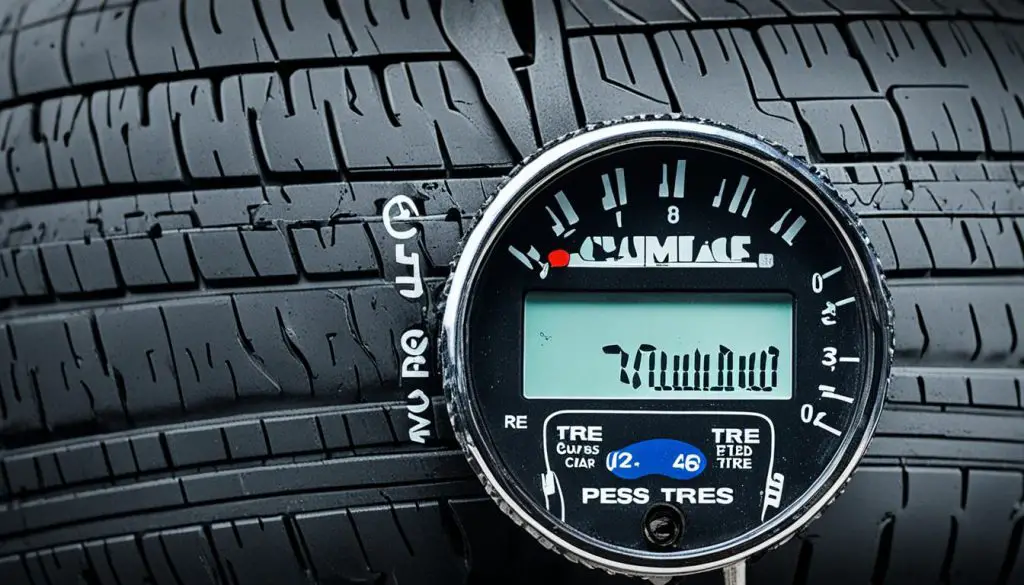
Monitor for Signs of Wear and Damage
It’s important to check tire pressure and depth regularly. But, you must also visually inspect your tires. Watch for cracks, bulges, and odd wear. These signs might mean your tires are underinflated, misaligned, or damaged inside. If you spot such signs, get them checked by a pro right away.
What to Look For
Here’s what to watch out for:
- Cracks or cuts in the tire sidewall – Indicate possible internal damage.
- Bulges or blisters on the tire surface – Suggest a separation or internal damage.
- Uneven or excessive wear on the tread – Could mean misalignment or suspension issues.
- Exposed tire cords or belts – A clear sign that you need a new tire.
Regular checks and quick fixes enhance your vehicle’s safety and tire life.
| Tire Wear Sign | Potential Cause | Recommended Action |
|---|---|---|
| Cracks or cuts in the sidewall | Internal damage, weakening of tire structure | Have the tire inspected and replaced if necessary |
| Bulges or blisters on the surface | Separation or internal damage within the tire | Have the tire inspected and replaced if necessary |
| Uneven or excessive tread wear | Misalignment, suspension problems, or other issues | Have the vehicle’s alignment checked and address any issues |
| Exposed tire cords or belts | Tread wear down to the internal components | Replace the tire immediately |
Replace Tires at the Right Time
Tire maintenance is vital for safety, performance, and saving fuel. Knowing when to replace tires is key. Typically, tires last 60,000 to 75,000 miles or 4 to 5 years. This lifespan is influenced by your driving, the roads you take, and regular upkeep.
When the depth of the tread is down to 4/32 of an inch, it’s time to replace all four tires. A simple test is to use a Penny Test. If you see the top of Lincoln’s head, it’s a sign for new tires.
Signs indicating tire replacement include poor traction, longer stopping distances, and uneven wear. Your car’s manual or a tire expert can advise the best time to change them. They will consider your vehicle and driving style.
Remember, aggressive driving and wrong tire pressure can shorten a tire’s life. To maximize tire life and performance, regular checks and maintenance are essential.
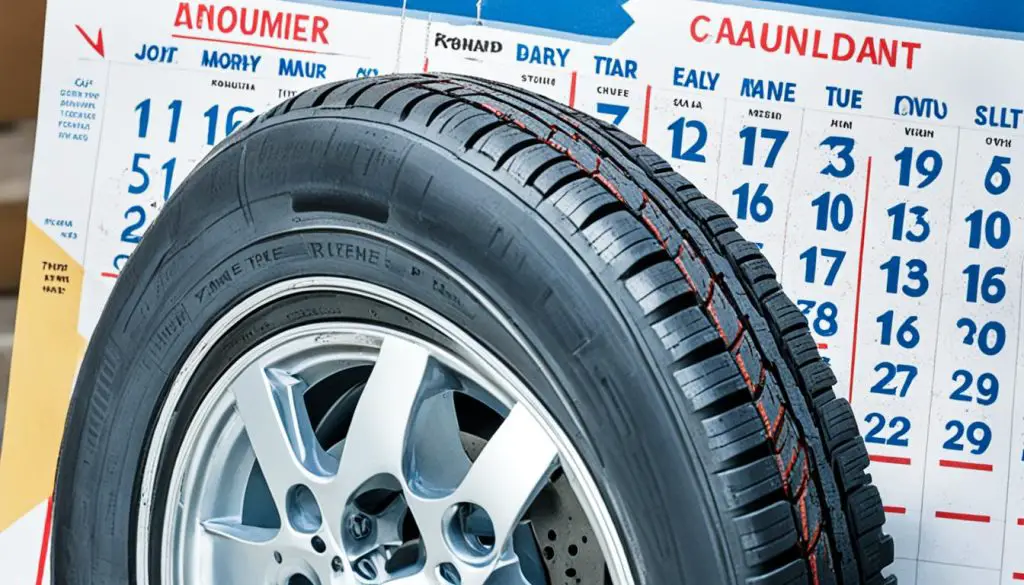
When buying new tires, aim for a full set of four that matches your car. If replacing less than four, match them closely to maintain balance. Avoid used tires since they may hide safety risks.
Keeping your tires well-serviced and knowing when to replace them improves your overall driving experience. For detailed advice, talk to a tire specialist. They can guide you on the best care for your tires.
Seasonal Tire Maintenance
With each season, your vehicle’s tires’ needs change. In colder months, transitioning to winter tires could be crucial, depending on where you live. Winter tires feature special designs and materials. They significantly boost traction and handling in winter elements.
For those facing snow and ice, investing in winter tires is wise. They ensure your vehicle is ready for winter’s challenges. Thanks to their unique design, winter tires can make a big difference in safety and performance.
Winter Tires
Compared to all-season or summer tires, winter tires shine in cold and snowy conditions. Their design includes deeper treads for better grip on icy surfaces. They enhance traction and performance in winter weather, keeping you safe on the road.
Winter tires stay flexible in the cold. This feature helps them grip the road better, reducing sliding or skidding. For places with severe winters, the winter tire benefits are priceless for ensuring safety and control.
Summer Tires
In hotter areas, summer tires are a top pick. Their soft, sticky rubber and unique treads maximize dry road traction. They’re excellent for sharp turns, quick stops, and fast acceleration when it’s warm.
However, summer tires struggle in cold conditions and on ice. For places with mild winters, all-season tires are an option. They offer balanced performance throughout the year, eliminating the need for seasonal tire changeovers.
For every driving environment, staying on top of tire care is key. It ensures your vehicle is equipped for diverse weather. Knowing the differences between all-season vs. winter tires and all-season vs. summer tires is vital for optimum safety and performance.
Proper Tire Storage
Keeping your vehicle’s tires in good condition and ensuring their long life requires careful storage, whether they are winter or summer tires. To prevent tire aging and damage, it is essential to place tires in a cool, dry area away from direct sunlight. Furthermore, avoid stacking them on top of one another to prevent warping and deformities.
Storing your off-season tires properly is crucial if you switch between winter and summer sets. Remember to check the air pressure in your spare tire regularly. Replace any tire showing signs of aging or damage. Despite their limited use, spare tires can wear out over time.
- Store tires in a cool, dry place, out of direct sunlight.
- Avoid stacking tires on top of each other to prevent warping.
- Check the air pressure in your spare tire regularly and replace it if necessary.
With these straightforward guidelines, you are on your way to keeping your tires optimized, whether rolling or tucked away. Proper tire storage plays a critical role in your vehicle’s tire health and performance.
Conclusion
Proper tire upkeep is key for any vehicle owner. This ensures your car is safe, uses fuel well, and performs its best. By sticking to a detailed tire maintenance plan, you can make your tires last longer. This will avoid costly fixes and give you a smooth ride. Always keep an eye on the tire pressure, tread depth, and do regular rotations and balances. Don’t forget to swap them when needed.
Not skipping seasonal tire swaps and storing them right can boost your tire’s life. Making tire care a top priority is smart. It keeps your car in great shape and you safe on the road. With the best maintenance, your car’s handling, gas mileage, and safety stays high. This cuts back on big repairs later.
Tire care is more than just for your wallet. It’s about safer driving for you and others. Keeping up with these tasks helps your car last longer. This leads to saving a lot of money and less worry when you drive.
FAQ
Q: Why is proper tire maintenance important?
A: Keeping your tires in good shape is essential for many reasons. It greatly boosts road safety by ensuring your car has optimal traction for steering, braking, and cornering. This effort not only enhances safety but also extends the lifespan of your tires, which saves you money. Moreover, well-aligned and properly inflated tires contribute to better fuel economy, keeping your running costs lower.
Q: How often should I check my tire pressure?
A: Regularly checking and adjusting your tire pressure is critical for tire health, fuel economy, and keeping your vehicle safe. You should use a reliable pressure gauge to manually check it monthly.
Q: How do I check my tire tread depth?
A: To maintain safety, especially in rough weather, it’s crucial to check your tire tread depth. One easy method is the penny test. Place a penny into the tread with Lincoln’s head pointing down. If you see the top of his head, it’s a signal to change the tires, since they’re less than 2/32 inch.
Q: What should I do to maintain my tires?
A: For tip-top tire health, remember to:
– Rotate them every 6,000-8,000 miles to avoid uneven wear.
– Balance them during rotation or when new to enhance performance.
– Align wheels yearly or if you spot odd wear signs.
– Buy a full set of tires that match in size and specs.
– Keep the spare tire in check too, ensuring it’s properly inflated.
Q: What should I look for when inspecting my tires?
A: Along with regular pressure and depth checks, a visual inspection for wear and tear is wise. Signs like cracks, bulges, or irregular tread wear suggest issues like underinflation, misalignment, or even internal damage.
Q: How often should I replace my tires?
A: Tires usually last 60,000-75,000 miles or 4-5 years. However, actual lifespan varies with driving habits, roads, and care. A rule of thumb is to replace all four when their tread depth hits 4/32 inch to ensure even performance.
Q: When should I switch to winter or summer tires?
A: Your tire choice depends on your local climate. For cold months, winter tires with snow and ice-biting designs offer vital traction and safety. In hot weather, summer tires and their grippier rubber excel at providing control on dry, warm roads.
Q: How should I store my tires?
A: If you switch tires seasonally, how you store them matters. Keep them in a cool, dry place away from direct sun and don’t stack them, to avoid shape distortion. Also, don’t forget to check your spare tire regularly and replace it if it’s old or damaged.
